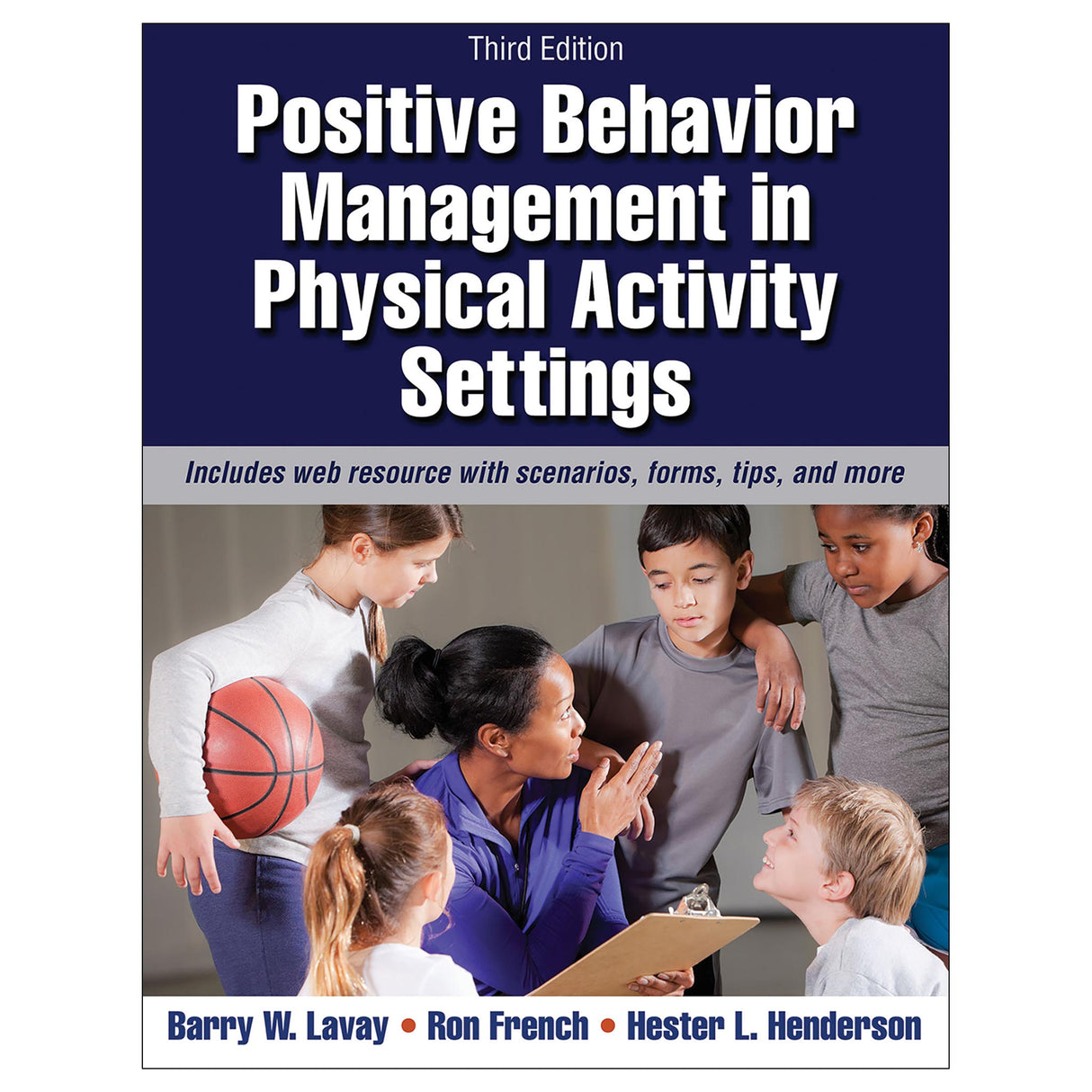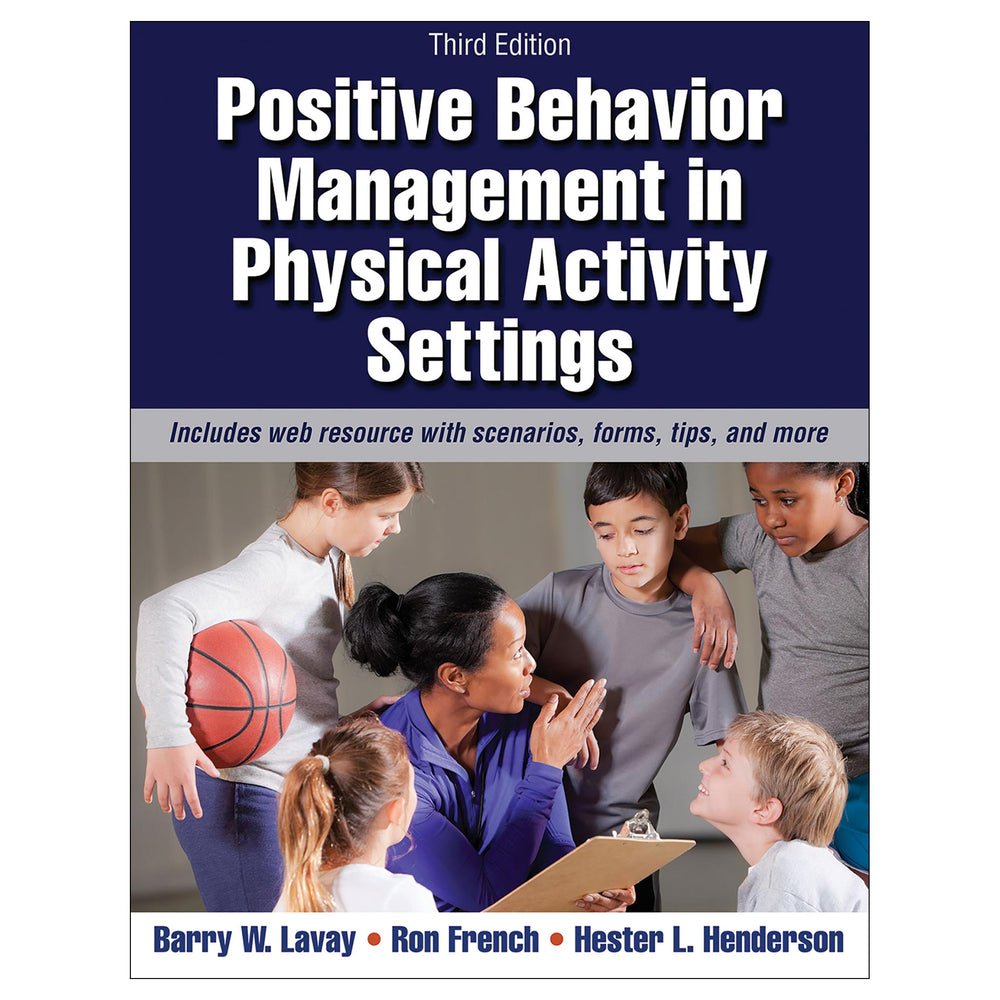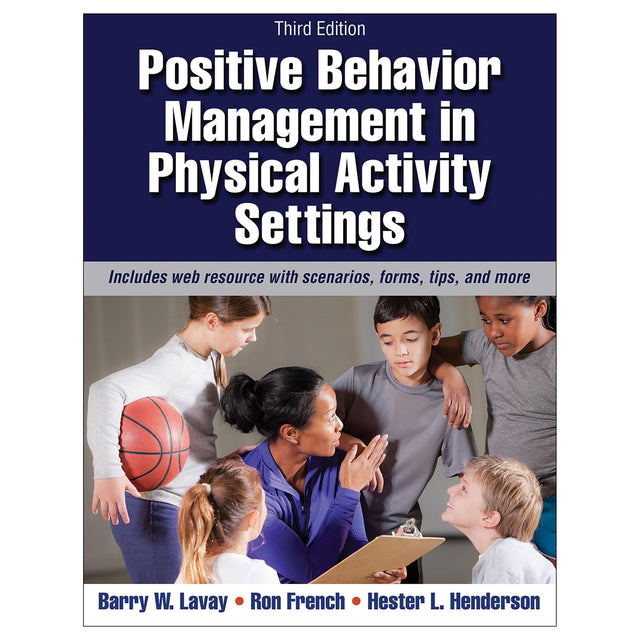Positive Behavior Management in Physical Activity Settings 3rd Edition With Web Resource
$80.95 CAD
It’s never been more challenging to manage behavior and motivate students in a physical activity setting.
There are more at-risk children and students with disabilities to manage. Physical activity professionals also face the unique challenge of providing instruction to large groups with limited resources and distractions galore. If not handled correctly, these challenges can quickly add up to chaos, ineffective instruction, and frustrated, burnt-out physical activity professionals.
That’s where the third edition of Positive Behavior Management in Physical Activity Settings, Third Edition comes in. This resource will help you not only overcome those and other discipline challenges, but also use tried-and-true, positive techniques to develop appropriate and responsible behaviors and good character among all learners.
This new edition incorporates principles, methods, and instructional practices from psychology, special education, pedagogy, recreation, athletics, and coaching. It shows teachers, coaches, and recreation leaders how to apply the principles that have proven effective in schools, youth sport programs, and recreation sites.
Positive Behavior Management in Physical Activity Settings offers this new material:
• A new chapter on bullying, providing up-to-date information to help you recognize and manage such behavior within your group
• A new chapter on children with special needs, including autism spectrum disorder, attention deficit disorder, learning disabilities, intellectual disabilities, traumatic brain injury, and behavioral/emotional disabilities
• A new chapter on behavior management ethics and professionalism, to help those who are preparing to be physical activity professionals at the pre-service and in-service levels
• New sections on motivating children who are overweight or obese, using the latest research to help you to encourage them to participate
Also new to this edition are an instructor guide and a web resource. The instructor guide offers different sample syllabi, showing various ways to teach the course; sample assignments; answers to chapter review questions; suggested further readings; and useful websites and apps. The web resource supplies behavior management scenarios, sample forms (checklists, rubrics, certificates, worksheets) from the chapters, instructions for designing an Applied Behavior Analysis graph and a trifold display, useful websites and apps, and a glossary by chapter.
This text provides you with evidence-based strategies in managing special needs populations, including designing a positive behavioral support (PBS) model and a behavioral intervention plan (BIP), as well as information on response to intervention (RTI).
The authors have added a fourth section to this new edition. Part I details the challenges that professionals face in developing a positive learning environment, and shows readers how to be proactive in doing so. Part II outlines the interventions that physical activity professionals have successfully used in a variety of settings. This part includes chapters that discuss behavioral, humanistic, and biophysical approaches. The final chapter in this section addresses how to evaluate the behavior intervention.
Part III explores behavior management with various populations, and offers the new chapters on bullying and on special needs children. In part IV, the authors discuss ethical and professional behavior of physical activity professionals relative to the application of behavior management techniques used with children and youth with a focus on professionalism. The final chapter will synthesize the information presented in this text and assist the reader to take the appropriate steps needed to develop a working, teaching, and behavior management portfolio.
GUIDANCE TO MOTIVATE CHILDREN
Positive Behavior Management in Physical Activity offers current and future K-12 physical educators, coaches, recreation specialists, and adapted physical education specialists guidance in motivating young people. You will learn how to manage behavior and create a physical activity environment that is conducive to performance and learning—and that is designed to empower children rather than control their behavior.
Audience
Text for undergraduate pedagogy and methods courses and reference for K-12 physical education teachers.
Part I Creating a Positive Learning Environment
Chapter 1 Introduction to Behavior Management
Chapter 2 Preventing Inappropriate Behaviors and Promoting Positive Behaviors
Part II Exploring Behavior Management Approaches
Chapter 3 The Behavioral Approach: Maintaining and Increasing Behaviors
Chapter 4 The Behavioral Approach: Redirecting and Decreasing Inappropriate Behaviors
Chapter 5 The Humanistic Approach: Accepting Social and Personal Responsibility and Building Character
Chapter 6 The Biophysical Approach: Biological Variables to Behavior
Chapter 7 Evaluating the Behavioral Intervention
Part III Behavior Management Challenges
Chapter 8 Bullying of Children and Youth
Chapter 9 Children and Youth With Unique Needs
Part IV Behavior Management in Practice
Chapter 10 Behavior Management, Ethics, and Professionalism
Chapter 11 Steps for Developing a Behavior Management Portfolio
“Positive Behavior Management in Physical Activity Settings is a knowledge base that is almost lost in teacher education. If you are a teacher and have challenges with your students’ behavior and want more from your students than just following directions, but you want enthusiastic cooperation from your students, this is the book.”
Phillip Ward, PhD, FNAK, RFSA-- Director of the Learning to Teach Physical Education Research Program, Ohio State University
Professional Ethics and the Use of Punishment in Physical Activity Environments
School-Age Overweight and Obesity Issues
Web Resource
The web resource features behavior management scenarios and sample forms from each chapter. Also included are instructions for designing graphs and trifold displays, useful websites and apps, and a glossary by chapter.
Instructor Guide
The instructor guide features several sample syllabi, course outlines, sample assignments, and answers to chapter review questions. Also included are suggested reading material and useful websites and apps.
All ancillary materials for this text are FREE to course adopters and available online at www.HumanKinetics.com/PositiveBehaviorManagementInPhysicalActivitySettings3E.





